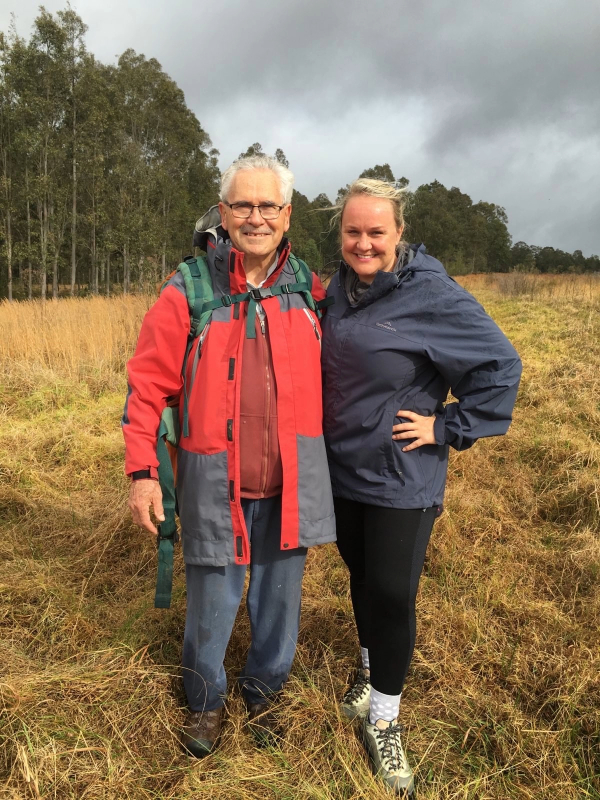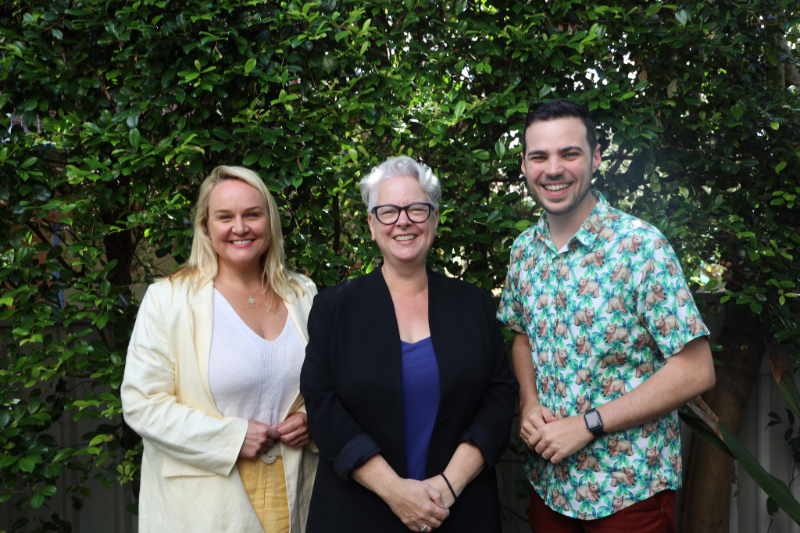City of Newcastle has secured the long-term protection of a significant wetland and woodland area, which forms an essential link in the biodiversity corridor between Stockton and the Watagans.
City of Newcastle signed a Conservation Agreement with the NSW Government for the 22-hectare parcel of land, which is located at Black Hill on the western edge of the internationally recognised Hexham Wetlands.
Newcastle Lord Mayor Nuatali Nelmes said the agreement follows the unanimous endorsement of Council last year and is the first major outcome of City of Newcastle’s Newcastle Environment Strategy.
“Newcastle has a well earnt reputation as a leader in local government when it comes to protecting our precious natural environment,” Cr Nelmes said.
 Lord Mayor Nuatali Nelmes and her father, former Deputy Lord Mayor Paul Scobie, exploring the Black Hill site in 2016.”I visited this site in 2016 with my father, a forthright environmentalist and former Councillor, and was amazed by the rich diversity of its flora and fauna.
Lord Mayor Nuatali Nelmes and her father, former Deputy Lord Mayor Paul Scobie, exploring the Black Hill site in 2016.”I visited this site in 2016 with my father, a forthright environmentalist and former Councillor, and was amazed by the rich diversity of its flora and fauna.
“This land is the gem of the north-west, providing an essential link in a biodiversity corridor identified in both regional and NSW plans.
“I acknowledge the NSW Environment Minister Penny Sharpe and her support as we work with the NSW Government through the NSW Biodiversity Conservation Trust.
“The Conservation Agreement will allow us to preserve this area in perpetuity, securing resilient homes for internationally significant migratory species and protecting state significant ecosystems in one of the largest east coast estuaries.
“We also acknowledge the cultural significance of this area of land to the Awabakal and Worimi, people and will meaningfully partner with our Traditional Custodians through our Guraki Aboriginal Advisory Committee on ongoing planning and management activities at this site.”
The coastal freshwater wetland and associated woodland is one of only two land parcels containing remnant riparian native vegetation along the vast perimeter of Hexham Wetlands.
The site is rich with a diverse array of important flora and fauna populations and contains high conservation value habitat, including the Lower Hunter Spotted Gum-Ironbark Forest, which is classified as an endangered ecological community.
A number of threatened species are associated with the parcel of land, including the grey-headed flying-fox, black-neck stork and netted bottle brush.
 Lord Mayor Nuatali Nelmes Minister Penny Sharpe and Deputy Lord Mayor Declan Clausen.NSW Environment Minister, Penny Sharpe, said it’s a fantastic result to see this area come under permanent protection.
Lord Mayor Nuatali Nelmes Minister Penny Sharpe and Deputy Lord Mayor Declan Clausen.NSW Environment Minister, Penny Sharpe, said it’s a fantastic result to see this area come under permanent protection.
“It has long-held significance to the Awabakal and Worimi people and has important ecological, cultural and social significance for Novocastrians and the Hunter community,” Minister Sharpe said.
“The conservation management actions City of Newcastle will take with the NSW Biodiversity Conservation Trust will preserve these wetland and woodland environments for the future. They leave a lasting legacy.”
Protecting the parcel of land aligns with three of the priorities from City of Newcastle’s Environment Strategy, including building a network of high-quality blue and green spaces to connect town centres and residential areas for enhanced liveability and biodiversity outcomes.
The value of the site has also been recognised and accommodated by Transport for NSW in its design of the adjacent extension of the M1 motorway.
Cr Nelmes said she wants to see that consideration extended to other forms of transport.
“The proposed alignment of a Lower Hunter Freight Corridor cuts across the northern boundary of the land parcel so we’re hoping this Conservation Agreement will be taken into consideration during the final design phase,” Cr Nelmes said.
